Related Research Articles
The Jackson–Vanik amendment to the Trade Act of 1974 is a 1974 provision in United States federal law intended to affect U.S. trade relations with countries with non-market economies that restrict freedom of Jewish emigration and other human rights. The amendment is contained in the Trade Act of 1974 which passed both houses of the United States Congress unanimously, and signed by President Gerald Ford into law, with the adopted amendment, on January 3, 1975. Over time, a number of countries were granted conditional normal trade relations subject to annual review, and a number of countries were liberated from the amendment.
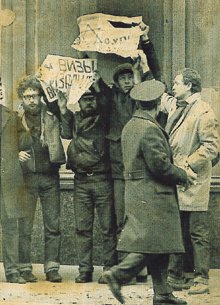
Refusenik was an unofficial term for individuals—typically, but not exclusively, Soviet Jews—who were denied permission to emigrate, primarily to Israel, by the authorities of the Soviet Union and other countries of the Soviet Bloc. The term refusenik is derived from the "refusal" handed down to a prospective emigrant from the Soviet authorities.

Natan Sharansky is a Soviet dissident and later Israeli politician, human rights activist and author who spent nine years in Soviet prisons as a refusenik during the 1970s and 1980s. He served as Chairman of the Executive for the Jewish Agency from June 2009 to August 2018. Sharansky currently serves as chairman for the Institute for the Study of Global Antisemitism and Policy (ISGAP), an American non-partisan organization.
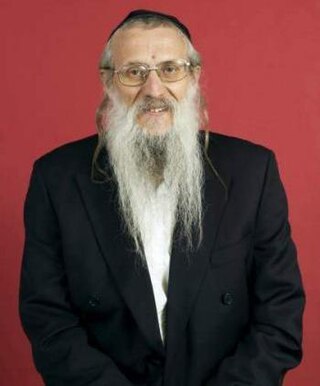
Yosef Mendelevitch, was a refusenik from the former Soviet Union, also known as a "Prisoner of Zion" and now a politically unaffiliated rabbi living in Jerusalem who gained fame for his adherence to Judaism and public attempts to emigrate to Israel at a time when it was against the law in the USSR.
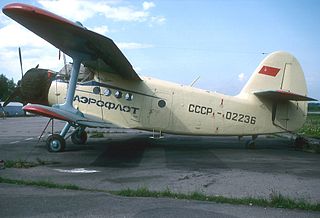
The Dymshits–Kuznetsov aircraft hijacking affair, also known as The First Leningrad Trial or Operation Wedding, was an attempt to take an empty civilian aircraft on 15 June 1970 by a group of 16 Soviet refuseniks in order to escape to the West. Even though the attempt was unsuccessful, it was a notable event in the course of the Cold War because it drew international attention to human rights violations in the Soviet Union and resulted in the temporary loosening of emigration restrictions.

Nativ, or officially Lishkat Hakesher or The Liaison Bureau, is an Israeli governmental liaison organization that maintained contact with Jews living in the Eastern Bloc during the Cold War and encouraged aliyah, immigration to Israel.
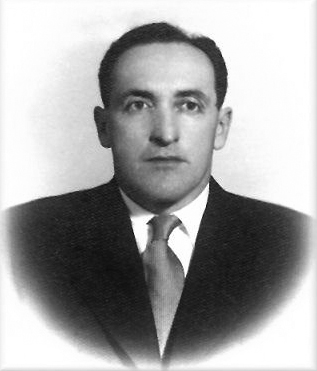
Nehemiah Levanon was an Israeli intelligence agent, diplomat, head of the aliyah program Nativ, and a founder of kibbutz Kfar Blum. Originally a native of Latvia, he immigrated to the Mandatory Palestine in 1938. After Israel's independence in 1948, Levanon served in a variety of roles to encourage the well-being and emigration of Soviet Jewry. Due to the covert nature of his work, Levanon's decades of service were largely unknown until after his retirement, during the last days of the Soviet Union.
Jacob (Yaakov) Birnbaum was the German-born founder of Student Struggle for Soviet Jewry (SSSJ) and other human rights organizations. Because the SSSJ, at the time of its founding, in 1964, was the first initiative to address the plight of Soviet Jewry, he is regarded as the father of the Movement to Free Soviet Jewry. His father was Solomon Birnbaum and grandfather Nathan Birnbaum.
The Student Struggle for Soviet Jewry, also known by its acronym SSSJ, was founded in 1964 by Jacob Birnbaum to be a spearhead of the U.S. movement for rights of the Soviet Jewry. Small, medium, and 6-digit-size demonstrations, at important locations, spread the message: Let my people go.

In Israel, a prisoner of Zion is a Jew who was imprisoned or deported for Zionist activity in a country where such activity was prohibited. The phrase is taken from words of Rabbi Judah Halevi: "Oh Zion, will you not ask after the welfare of your prisoners." The former Speaker of the Knesset, Yuli Edelstein, and the former Chairman of the Executive of the Jewish Agency, Nathan Sharansky, were both prisoners of Zion in the Soviet Union.
The National Coalition Supporting Eurasian Jewry (NCSEJ), formerly the National Council for Soviet Jewry (NCSJ), is an organization in the United States which advocates for the freedoms and rights of Jews in Russia, Ukraine, Belarus, the Baltic States, and Eurasia. Emerging from the American Jewish Conference on Soviet Jewry, now with a paid staff, it played an important role in the Soviet Jewry movement, including such landmark legislation as Jackson–Vanik amendment. Headquartered in Washington, D.C., it is now an umbrella organization of about 50 national organizations and 300+ local federations, community councils and committees.
Freedom Sunday for Soviet Jews was the title of a national march and political rally that was held on December 6, 1987 in Washington, D.C. An estimated 250,000 participants gathered on the National Mall, calling for the General Secretary of the Communist Party of the Soviet Union, Mikhail Gorbachev, to extend his policy of Glasnost to Soviet Jews by putting an end to their forced assimilation and allowing their emigration from the Soviet Union. The rally was organized by a broad-based coalition of Jewish organizations. At the time, it was reported to be the "largest Jewish rally ever held in Washington."

Pamela Braun Cohen is an activist in the American Soviet Jewry movement. She began her activist work in the Chicago Action for Soviet Jewry in the 1970s and served as the national president of the Union of Councils for Soviet Jews (UCSJ) from 1986-1997.

Avital Sharansky is a former activist and public figure in the Soviet Jewry Movement who fought for the release of her husband, Natan Sharansky, from Soviet imprisonment.

The Greater New York Conference on Soviet Jewry (GNYCSJ) was founded in 1971, as a non-governmental grassroots organization that worked to secure human rights for Jews in the Soviet Union. It served as an umbrella agency for a number of regional organizations of the Soviet Jewry movement. In the 1980 GNYCSJ was renamed Coalition for Soviet Jewry.
Louis Rosenblum was a pioneer in the movement for freedom of emigration for the Jews in the Soviet Union, was a founder of the first organization to advocate for the freedom of Soviet Jews, the Cleveland Council on Soviet Anti-Semitism, founding president of the Union of Councils for Soviet Jews, and a research scientist at the National Aeronautics and Space Administration (NASA) Lewis Research Center.
Cleveland Council on Soviet Anti-Semitism was founded in 1963 as a grassroots human rights campaign to alleviate the growing oppression of the Jewish community inside the Soviet Union and the other Soviet bloc countries. The Cleveland Council was the first organization of the American Soviet Jewry Movement, a human rights campaign of the 1960s, 70s and 80s.
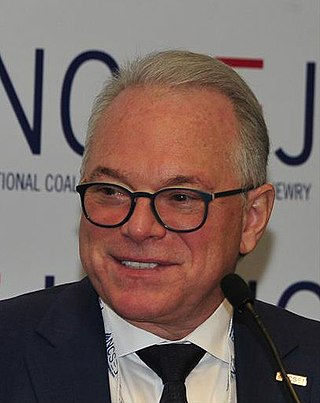
Alexander Smukler is the chairman of the board of Agroterminal LTD and the chairman of the board of Century 21: Russia, Kazakhstan, and Ukraine. He is a former managing partner of Ariel Investment Group, which develops commercial enterprises and civil engineering projects in Russia.
Albert S. Axelrad is an American Reform rabbi, author, educator, and community leader. He fostered the American Jewish counterculture of the 1960s-1980s. He also served as Jewish chaplain at Brandeis University and Executive Director of its B'nai B'rith Hillel Foundation from 1965 to 1999.
Roselyn "Lynn" Brod Singer was an American activist for the rights of Soviet Jewry 'refuseniks'. As the leader of the Long Island Committee for Soviet Jewry and a member of the board of the Union of Councils for Soviet Jews, she brought the issue of Jews trapped in the Soviet Union to international attention through a series of political actions, including sit-ins at the United Nations and the Soviet compound in Glen Cove, as well as protests and marches.
References
- ↑ Orbach, William W. (1979). The American movement to aid Soviet Jews. Amherst: University of Massachusetts Press. ISBN 0-87023-267-3. OCLC 4495649.
- ↑ Beckerman, Gal. (2011) [2010]. When they come for us, we'll be gone : the epic struggle to save Soviet Jewry (1st Mariner books ed. 2011 ed.). Boston: Mariner Books. ISBN 978-0-618-57309-7. OCLC 694829899.
- ↑ The New York Times wrote in their obituary about Jacob Birnbaum: "Mr. Birnbaum insisted that every rally include posters declaring 'Let my people go,' the line from Exodus 9:1 that became the clarion call of the movement."
- ↑ "4,000 assail Soviet on plight of Jews". The New York Times . September 21, 1970.
- ↑ Keys, Barbara J. (17 February 2014). Reclaiming American virtue : the human rights revolution of the 1970s. Cambridge, Massachusetts. ISBN 978-0-674-72603-1. OCLC 871257472.
{{cite book}}: CS1 maint: location missing publisher (link) - ↑ 19 U.S.C. 2432(a), Sec. 402 "Freedom of Emigration in East-West Trade"
- ↑ Paul Stern (1979). "3". Water's Edge: Domestic Politics and the Making of American Foreign Policy. Bloomsbury Academic. ISBN 978-0313205200.
- ↑ Christopher Lehmann-Haupt (May 3, 2002). "Ida Milgrom, 94, Dies; Helped Free a Son Held by Soviets". The New York Times .
- ↑ Dennis McLellan (May 4, 2002). "Ida Milgrom, 94; Sought Dissident Son's Freedom". The Los Angeles Times .
- ↑ "Our History," section "The Cleveland Council on Soviet Anti-Semitism." Beth Israel – The West Temple, Cleveland, Ohio. Retrieved 2015-09-22.
- ↑ Feingold, Henry L. (2007). "Silent No More" Saving the Jews of Russia, The American Jewish Effort, 1967–1989. Syracuse, New York: Syracuse University Press. ISBN 978-0-8156-3101-9.
- ↑ Beckerman, Gal. When They Come For Us We'll Be Gone. Houghton Mifflin Harcourt, 2010.
- ↑ Weiss, Avi. Open Up The Iron Door. Toby Press, 2015.
- ↑ Lazin, Frederick A. (2005). The struggle for Soviet Jewry in American politics : Israel versus the American Jewish establishment. Lanham, Md.: Lexington Books. ISBN 0-7391-0842-5. OCLC 56876939.